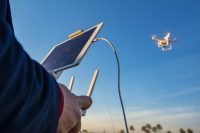SADLERProduct Liability Insurance Aggressively negotiating most favorable terms from leading carriers
Call Toll Free 800-622-7370
Categories
- Additional Insured
- ChildrensProducts
- Claims Made
- Cyber Insurance
- Dietary Supplements and Nutraceuticals
- Ecigarettes
- Firearms Insurance
- Food Products
- Foreign Products Liability
- Foreseeable Misuse
- Frivolous Lawsuits
- General Liability
- Industrial
- Infographics
- Intellectual Property
- Looking ahead
- Marijuana Liability
- Medical Products
- Mutual Indemnification
- Nano Technology
- News
- Online Sellers Insurance Requirements
- Outsourcing
- Piercing The Corporate Veil
- Pollution Liability
- Product liability
- Product Recall
- Retail Chain Store
- Start-Up Business
- Statute of Repose
- Surplus Lines Insurance
- Technology
8 Product Liability Risk Factors of Drone Use

Misuse, intentional or otherwise, could lead to liability issues
Drones are everywhere now and you’ll be seeing even more of them in the years to come. While still popular with hobby enthusiasts, they’re gaining even more ground in commercial markets, where we could see 2.7 million in use by 2020.
Land surveying, natural disaster damage assessment, delivery of food and medical supplies, aerial photography, agricultural surveillance, border patrol, industrial and construction inspections, and law enforcement are only some of the areas where drones are currently being used commercially.
As useful as drones are, there are serious risks associated with their use.
- Lack of Regulation: There is little to no local, regional or international regulation in many countries with regard to the safe operations of drones. This includes maintenance regulations. This gives rise to serious risks since these unmanned aircraft are sharing airspace with commercial, private and military aircraft.
- Collisions: Piloted aircraft that fly below 500 ft. are most at risk for colliding with drones. This includes commercial aircraft upon landing/take-off, helicopters, agricultural aircraft and gliders. A drone colliding into a commercial aircraft could result in more than $5 million in physical damage.
- Operator Error: Hobbyists, including many children, currently make up the majority of most drone operators. The lack of regulatory oversight and mandatory safety training for hobbyists is serious cause for concern.
- Losing Control: Disruption of communication with the drone can occur if it flies outside its signal range or its system fails. Numerous instances such as these have already occurred, which makes it a high-level risk.
- Cyber Attack: Since drones are controlled by Wi-Fi radio signals, they can be hacked by cyber criminals who steal the data collected by the drone. Likewise, drones can be “spoofed,” which is when hackers take over the drone’s radio signals and take control of the aircraft.
- Liability: Once regulations are in place, high-dollar liability claims will be made against manufacturers (product liability exposure), businesses (general liability exposure), and operators for property, bodily injury and financial damages.
- Malice: Acts of terror by drone are a real threat; there have already been occurrences of drones flying over power and nuclear stations. Drones can also easily target crowds gathered in stadiums, parades, festivals and other outdoor events.
- Privacy: In 2016, the FAA has provided guidelines regarding privacy and other drone-related risks. Best practice guidelines regarding privacy of people on the ground were also issued by the National Telecommunications and Information Administration in 2016. But these are voluntary guidelines, and the lack of regulation means the potential for invasions of privacy and trespassing is a serious risk.
Source: “10 Risks and Misuses for Drones.” www.Propertycasualty360.com. Oct. 2016.
Posted By: Paul L. Owens
-
 Click the Button Below to Get Your
Click the Button Below to Get Your
No-Obligation Quotes from Among the
Top 18 Leading Insurance Carriers Today -
Recent Industry News
- Amazon Sellers and Vendors Strategy Including Insurance Requirements
- Walmart Sellers Insurance
- Product Liability Limit Requirements of Online Sellers
- State-by-State Product Liability Analysis of Laws Impacting Businesses
- Children’s Product Liability: Strange Claims and Need for Insurance
- Product Liability vs. Environmental Insurance for the Chemical Industry
- Product Liability in the 3D Printing Industry: New Materials and Their Significance
- Product Liability Concerns in Agricultural Equipment Enhanced with Artificial Intelligence
- Navigate Product Liability in Battery and Solar Industry
- Cyber Risk Insurance Is Essential Business Insurance in Today’s Modern World
Monthly News Archives
